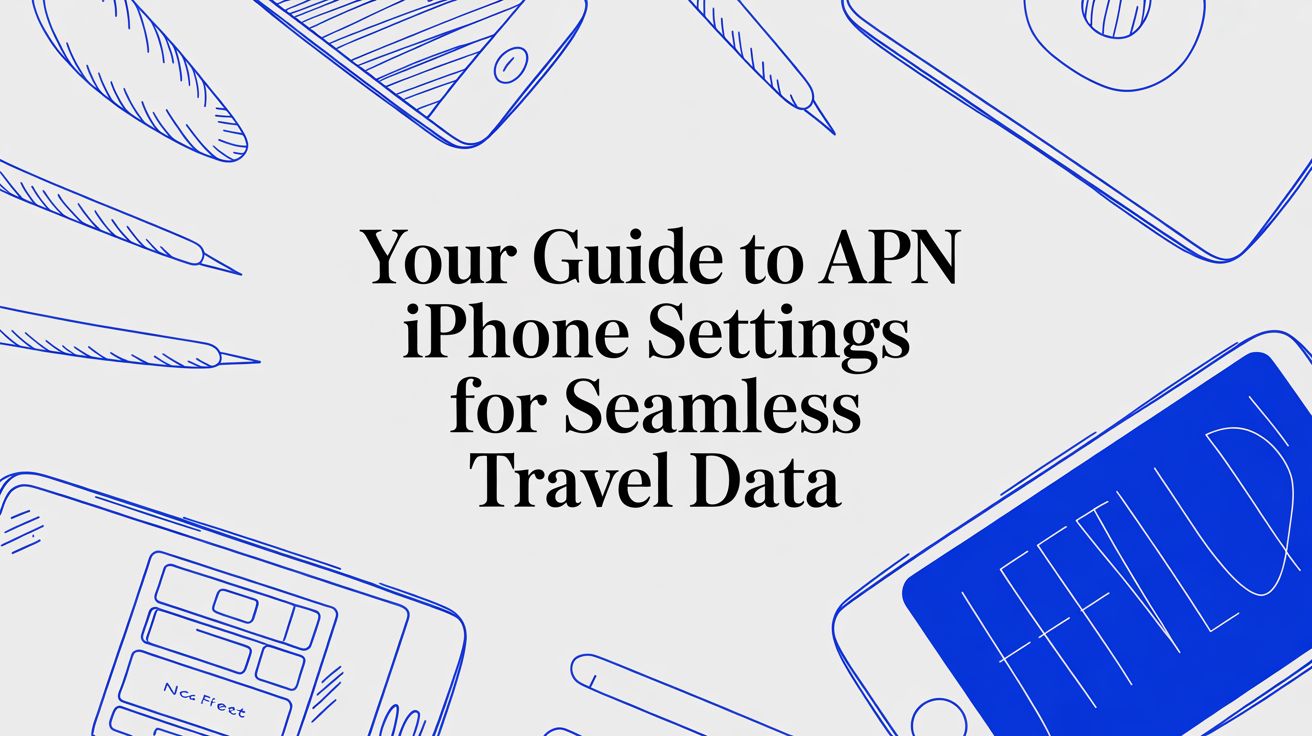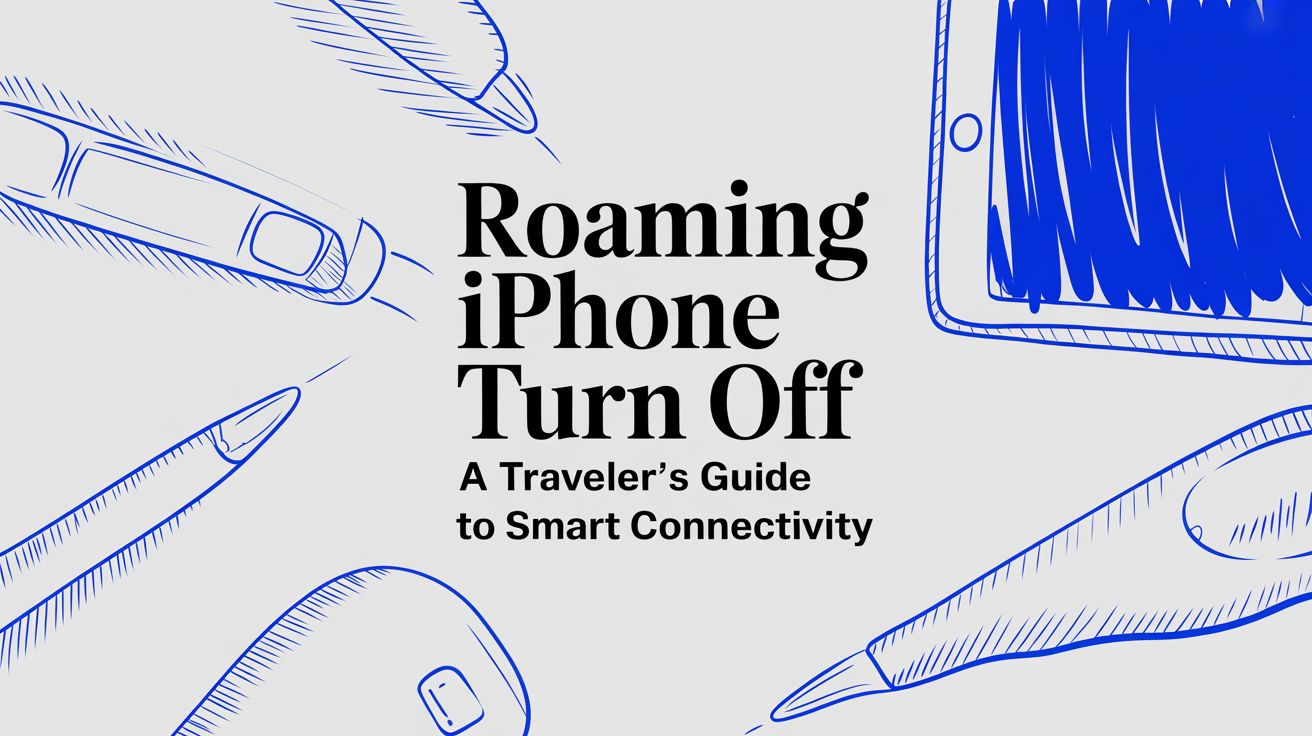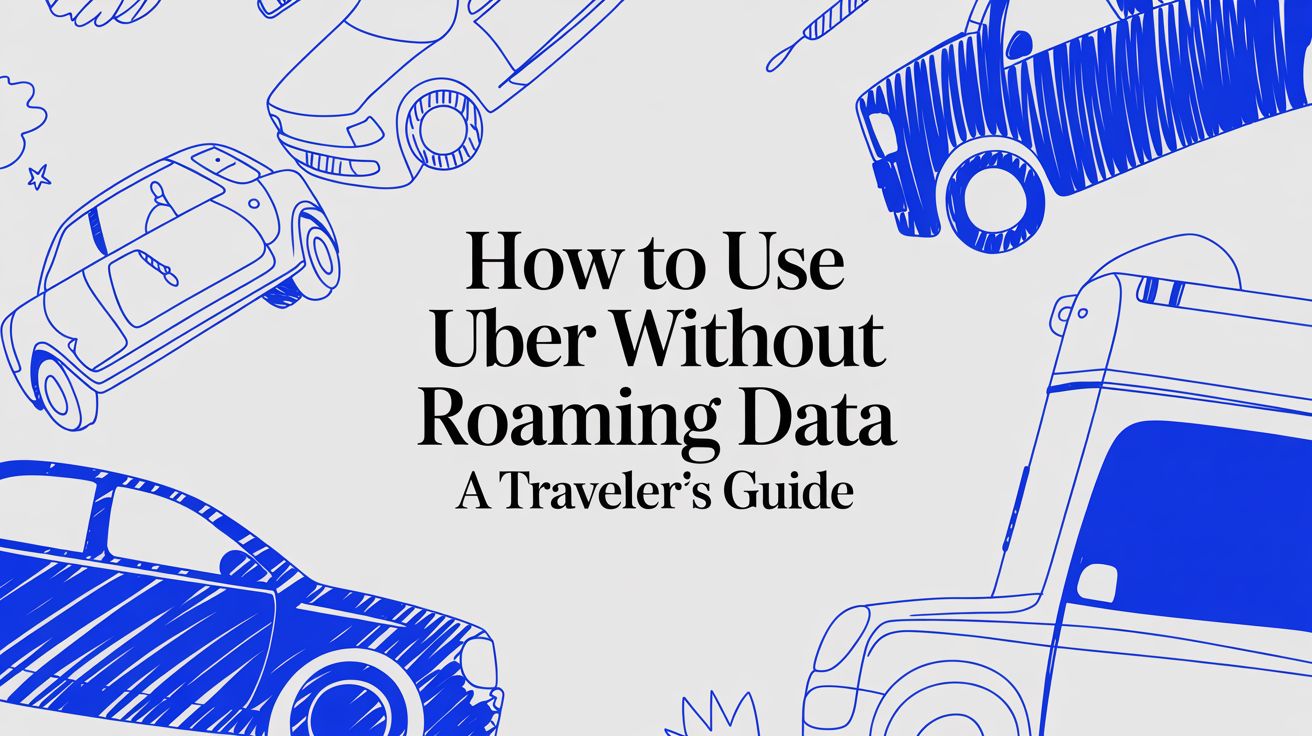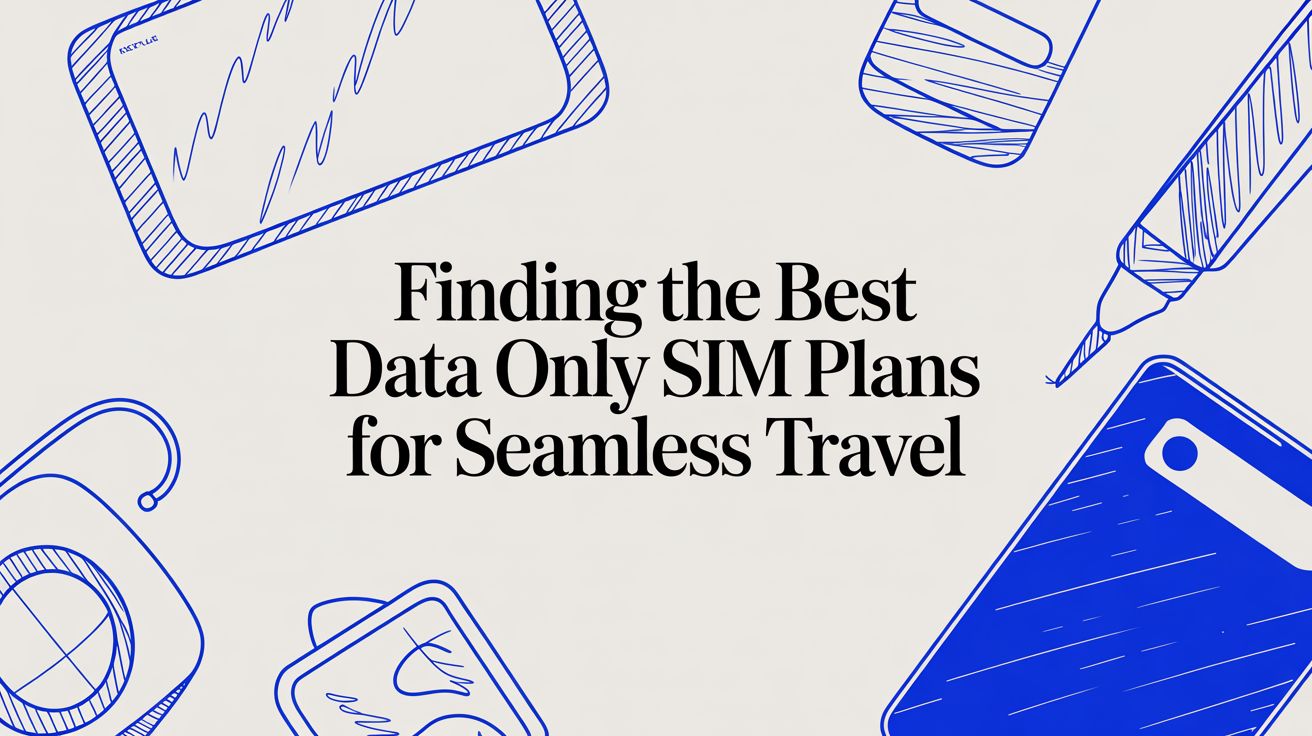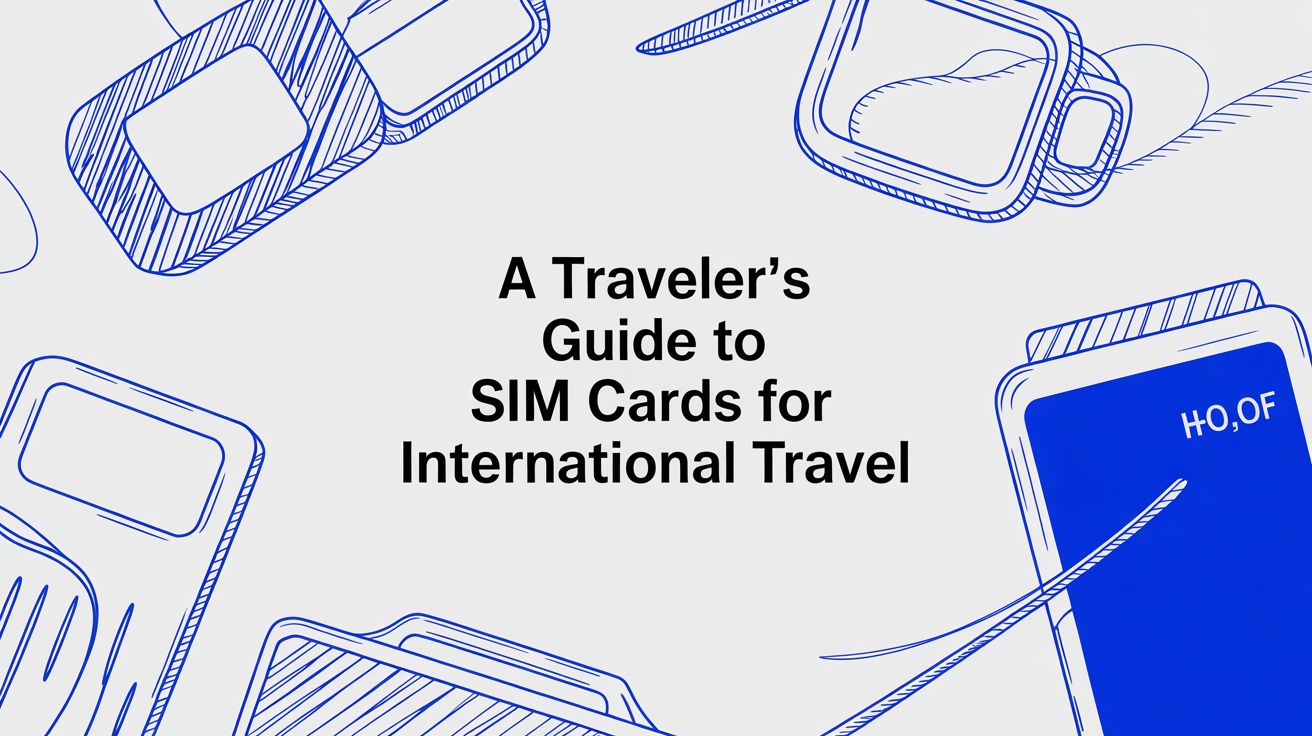
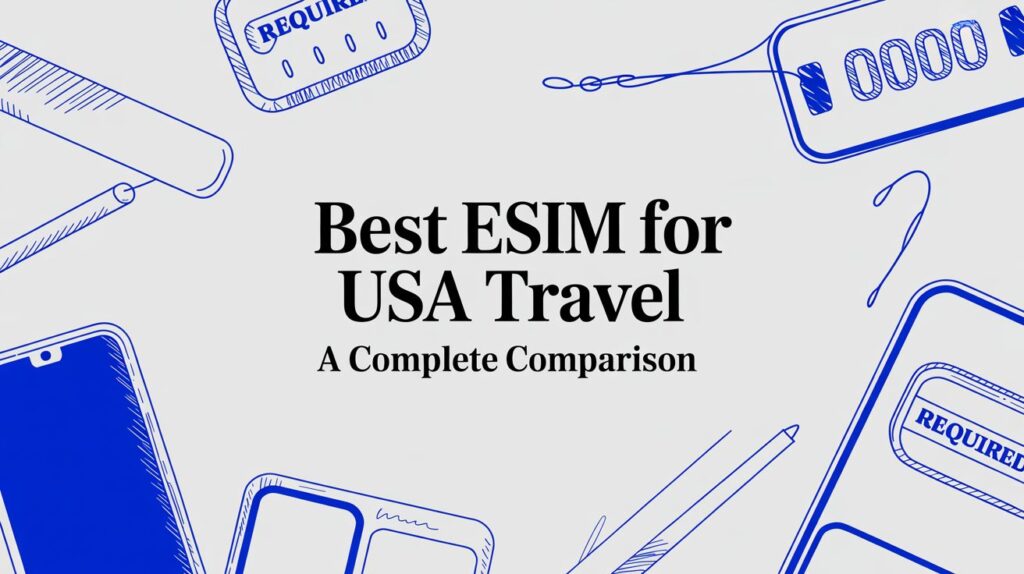
When you’re looking for the best eSIM for USA travel, the right one for you really boils down to your trip’s focus: One option offers great overall balance, another stands out for fast data speeds, and the third is recognized for dependable coverage nationwide.

You’ve booked the flights and sorted your accommodation for the USA, but what about your phone? Relying on your UK mobile network for roaming can lead to some eye-watering bills, often hitting £6 a day or more. This is where an eSIM (an embedded SIM) comes in. It’s a modern, digital solution that lets you download a local data plan straight to your phone, giving you a much cheaper and simpler way to get online the moment you land.
Forget the hassle of queuing for a physical SIM card at the airport. With an eSIM, you can buy and install your plan before you even pack your bags. This simple bit of prep means you can hit the ground running, activating your data service instantly to book a taxi, pull up your hotel reservation, or just let everyone back home know you’ve arrived safely.
The move towards digital-first travel is impossible to ignore. In fact, a 2025 survey from Kaleido Intelligence found that 42% of UK travellers now prefer using an eSIM over a physical SIM for their international trips. That’s a massive jump from just a few years ago, and it’s all down to the convenience and savings they offer, especially for a popular destination like the USA.
This guide will walk you through the top options, breaking down what to look for so you can find the perfect eSIM for your American adventure. To get a head start, it’s worth understanding the different types of eSIM plans available for international travellers.
To make things even easier, I’ve put together a quick summary table below. It highlights my top picks for different kinds of travellers, helping you find a great match right away.
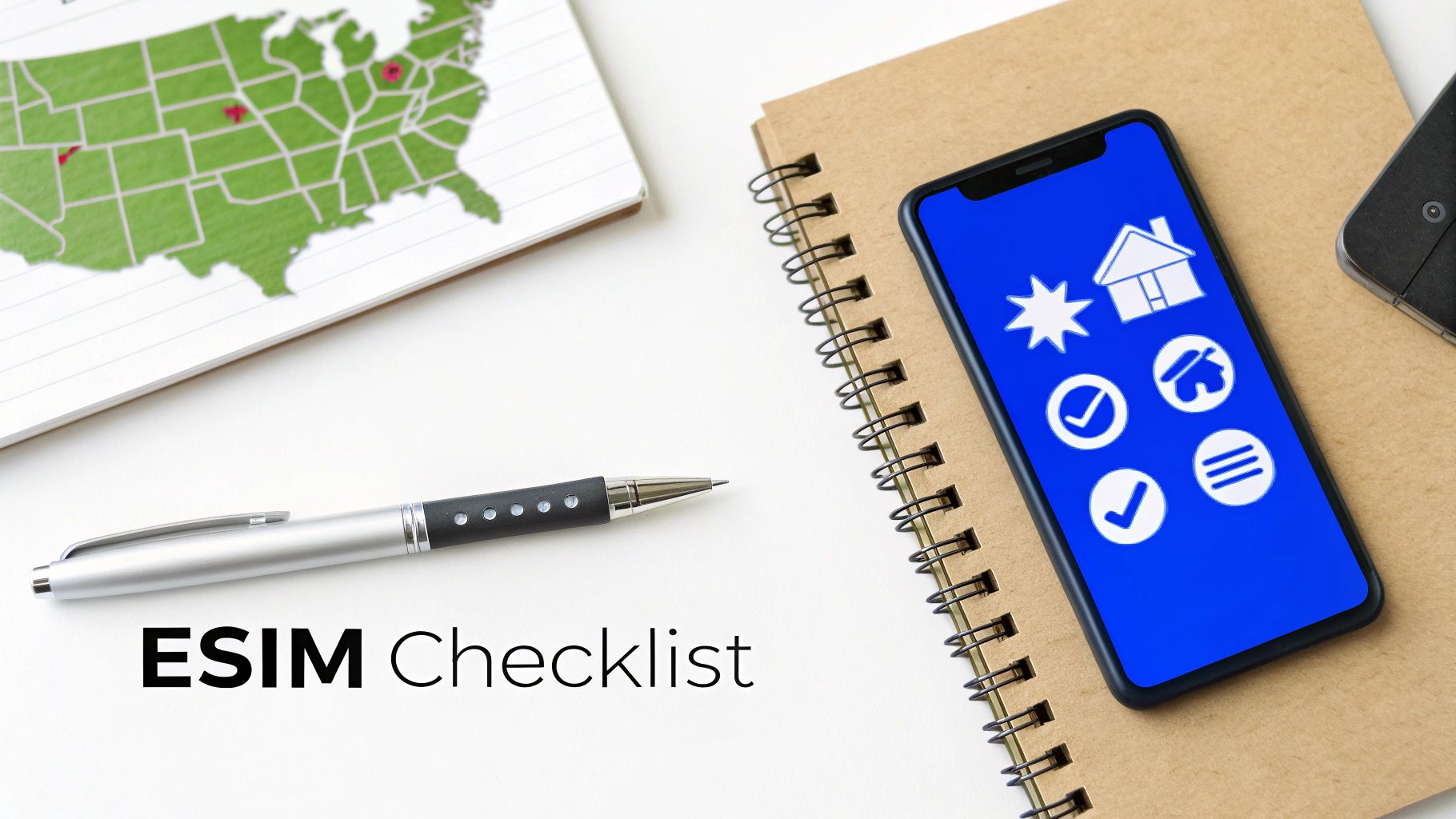
Picking the perfect eSIM for a trip to the States involves more than just glancing at the price tag. To find the best eSIM for USA travel, you need a solid way to compare the options. It’s about getting into the nitty-gritty details that actually affect your trip, from how well your phone will work in different states to the small print on data caps.
After all, a cheap plan is no bargain if it has zero signal in the national parks you’re dying to see. And an “unlimited” plan that slows to a crawl after you’ve watched a few videos is just plain frustrating. Let’s break down the key criteria so you can analyse any eSIM plan like a seasoned traveller.
The United States is huge, and mobile coverage can be brilliant in one place and non-existent just down the road. Your eSIM is only as good as the local network it piggybacks on. In the USA, there are three big players: AT&T, Verizon, and T-Mobile.
Before you buy, always check which local network an eSIM provider uses. You can usually find this on their website, and it’s probably the most important factor for staying connected wherever you go.
The word “unlimited” on an eSIM plan should always be taken with a grain of salt. While it sounds great, almost every provider has a Fair Usage Policy (FUP) hidden in the terms.
This policy sets a cap on your daily high-speed data—say, 2GB. Once you hit that limit, your connection speed is drastically cut back, or “throttled.” Throttled speeds are usually just enough to receive an email or a WhatsApp message, but forget about streaming Netflix or making a video call.
A key differentiator when comparing eSIMs is the daily high-speed data allowance on unlimited plans. A provider offering 5GB of fast data per day is significantly better than one that throttles you after just 1GB, even if both are advertised as ‘unlimited’.
Next up is the classic balancing act: how much data you get versus how long you have to use it. A plan with a massive 20GB of data might seem like a great deal, but if it’s only valid for 15 days and your trip is a month long, it’s not the right fit.
Take a moment to think about how you’ll use your phone. Are you just checking maps and sending messages, or will you be uploading high-res photos and streaming music on the road?
Your goal is to find a plan where the data and the validity period match your itinerary. For longer stays, it’s almost always cheaper to buy one larger, 30-day package than to constantly top up a smaller, short-term plan. A little bit of planning here saves both money and hassle.
For many of us, especially if you’re working on the go or travelling with family, being able to share your phone’s data is a must-have. This is where a personal hotspot, or tethering, comes in. But here’s the catch: not all eSIM plans allow it.
Even worse, some “unlimited” plans that do permit tethering have tiny data caps specifically for hotspot use. Imagine trying to get some work done on your laptop in a café with dodgy Wi-Fi, only to discover your eSIM won’t let you share its connection. It’s a common headache that’s easily avoided by checking the provider’s policy first. If sharing your data is non-negotiable, make it a top priority when you compare plans.
Right, you now know what to look for in an eSIM. Let’s put that knowledge to work and compare the big players side-by-side. The “best” eSIM for your USA trip really comes down to how well a provider’s strengths match what you actually need. We’ll get into the details of what Airalo, Holafly, Nomad, and Saily offer UK travellers heading stateside.
This isn’t just about ticking off features from a list. It’s a real-world look at what matters on the ground: which local networks they partner with, what the data speeds are actually like, the truth behind those ‘unlimited’ plans, and whether you’re getting good value for your money. We’ll pinpoint the small differences that can make a huge impact on your trip, from getting a signal in a national park to how easily you can add more data if you run low.
The word ‘unlimited’ needs to be taken with a pinch of salt. Nearly every unlimited eSIM plan includes a Fair Usage Policy (FUP), which means your data speed will be drastically slowed down (throttled) after you’ve used a certain amount of high-speed data.
For many of us, especially if you’re working on the go or travelling with family, being able to share your phone’s data connection is a must-have. This is a critical point where providers really differ.
Let’s be clear: there’s no single “best eSIM for the USA”. The right choice for you is personal and hinges entirely on your travel plans, how much data you chew through, and what you’re willing to spend. To find your perfect match, you need to align a provider’s strengths with what your trip actually demands.
A cheap, low-data plan that’s perfect for a weekend whizzing around New York City would be a disaster for a business traveller who needs rock-solid, high-speed connectivity for back-to-back video calls. In the same way, a digital nomad embarking on a multi-month road trip has completely different needs to a family heading to Florida’s theme parks for two weeks.
This section will help you figure out which travel persona you fit into and what that means for your eSIM choice.
This quick decision tree can help you visualise whether price, coverage, or sheer speed should be your top priority.

As you can see, locking down your main priority is the fastest way to cut through the noise and zero in on the eSIM that makes the most sense for you.
If you’re popping over for a week or two and sticking to major hubs like Los Angeles, Chicago, or Miami, your focus should be on simplicity and value. You don’t need a monster data package, just enough to get around with Google Maps, upload a few photos, book a ride-share, and check your emails.
For this kind of trip, a provider with smaller, budget-friendly data bundles is your best bet.
A provider like TapSim fits this mould perfectly. They offer cost-effective, smaller data plans that give you more than enough connectivity for a city break, without making you pay for gigabytes you’ll never touch. But there’s also the option to purchase larger plans or top-up with more data as needed.
For anyone travelling for work, reliability isn’t a nice-to-have; it’s essential. Your priorities swing away from pure cost and towards performance, demanding consistent coverage, fast speeds, and the ability to share your connection with your laptop or tablet. A dropped video call or being unable to tether in an airport lounge is simply not an option.
A deal-breaker for business users is robust hotspot capability. An “unlimited” plan that chokes or blocks tethering is pretty much useless for getting work done. Always double-check that a plan explicitly supports hotspot usage before you buy.
Here’s what you should be looking for:
Digital nomads and people on extended road trips have a unique list of demands. You aren’t just visiting; you’re living and working on the move, often for a month or more at a time. This means you need a hefty data allowance, flexibility, and coverage that works just as well in a bustling city as it does in a remote national park.
Your focus should be on getting the best value for bulk data and having network versatility.
For this type of traveller, TapSim often strikes the best balance. Their large data plans and use of multiple network partners deliver the flexibility and solid connection needed for a long-term stay in the USA.
You’ve picked out and bought your eSIM plan – that was the easy part. Now, let’s get it working so you can be online the moment you touch down in the USA. The process is pretty simple, but a bit of prep work makes all the difference.
My number one piece of advice? Install your eSIM at home, where you have a solid Wi-Fi connection. The plan won’t actually activate and start its countdown until you land in the States and connect to a local network. Getting the installation out of the way beforehand saves you the headache of fumbling with it at the airport.
Before you even think about buying, you absolutely have to check two things: that your phone is unlocked and that it supports eSIMs. Most newer smartphones do, but it’s always best to be sure.
Settings > Mobile Data. If you see a button for “Add eSIM,” you’re good to go.Settings > Connections > SIM Manager. An “Add eSIM” option means your phone is compatible.After you’ve bought your plan, you’ll get an email from the provider, usually with a QR code. This little square is your ticket to getting set up.
Think of that QR code as a one-time key for installing the eSIM profile. Only scan it when you’re ready to add the plan, and whatever you do, don’t delete the eSIM from your phone after installing it unless you’re completely done with your trip.
Installing an eSIM only takes a couple of minutes, and your phone walks you through most of it. You’ll need the internet to download the eSIM profile itself, which is exactly why I recommend doing this from your sofa, not from the airport departure lounge.
Once that’s sorted, your phone is all set. As soon as you land, just make sure data roaming is off for your UK line and then switch your Mobile Data over to your new travel eSIM. It should find and connect to a local network within moments.
Of course, sometimes technology has other ideas. If you land and find your eSIM isn’t connecting, don’t worry. The fix is usually something quick and simple.
First, double-check that data roaming is actually enabled for your new travel eSIM in your phone’s settings. It sounds obvious, but this catches people out all the time. If that doesn’t sort it, a simple restart of your phone often gives it the nudge it needs to register on the local network.
For any more stubborn issues, we’ve got a comprehensive guide on troubleshooting mobile data issues while travelling that digs into more advanced solutions. A little bit of know-how will have you connected and ready to enjoy your trip.
Right, you’ve got your eSIM sorted, but a few questions might still be nagging you. It’s completely normal. Getting to grips with how a travel eSIM works alongside your home plan can feel a bit technical at first.
Let’s clear up some of the most common queries we hear from UK travellers, from handling your UK number to what to do if you burn through your data faster than expected.
Yes, absolutely. This is one of the best things about having a dual-SIM phone. You can keep your UK SIM active for calls and texts while using the USA eSIM for all your mobile data needs.
It’s a simple tweak in your phone’s settings. You’ll set your local SIM as the default for calls and texts, and the new travel eSIM as the one for data. A word of warning, though: check your local network’s roaming charges for incoming calls. Answering them could still rack up a bill, so be mindful of that.
Running out of data mid-trip is a classic travel worry, but thankfully, most eSIM providers have made this a non-issue. You won’t be cut off and left scrambling for a Wi-Fi signal.
Providers have slick apps that let you keep an eye on your usage and buy a top-up pack in a few taps. You’ll usually get a notification when you’re running low, giving you plenty of time to add more data without having to install a whole new eSIM. It’s always smart to check a provider’s top-up process and prices before you buy the initial plan.
The coverage you get from your eSIM boils down to which local network it uses in the States. The big three are AT&T, T-Mobile, and Verizon, and they each have their sweet spots.
Always have a quick look at the provider’s coverage map on their website before you buy. This is crucial if your trip takes you beyond the big cities, as it ensures you pick an eSIM that won’t let you down, wherever you end up.
Yes, it’s nearly always cheaper—and a whole lot easier—to sort out your eSIM before you leave the UK. Buying online means you can shop around, compare deals properly, and find the best value without any pressure.
Since Brexit, this has become even more important for us Brits. The old ‘Roam Like Home’ perks don’t apply to the USA anymore. A 2025 report highlighted that only a measly 12% of UK mobile networks still offer free roaming in the States, a massive drop from 45% back in 2019. This has completely changed how we travel, with 78% of UK travellers now opting for eSIMs for their USA holidays, compared to just 32% in 2020. You can read more about this global travel eSIM trend on Techradar.com.
Getting it sorted beforehand lets you install the eSIM on your home Wi-Fi and activate it the second your plane touches down. No more faffing with airport kiosks or wasting precious holiday time in queues.
For a connection that just works on your next trip, check out the simple, upfront data plans from TapSim. Get online in minutes and enjoy your travels without the roaming bill dread. Find your perfect USA plan at https://tapsim.net.

